
HVAC Diagrams 101 Diagrams
What Does HVAC Stand For? First things first, let's decode that HVAC acronym. HVAC stands for Heating, Ventilation, and Air Conditioning. It's a system that's designed to keep your home comfortable and your air quality high, no matter what the weather's like outside.

Air Conditioner Schematic Hvac air conditioning, Central air
Central Air Conditioning System Diagram: A central air conditioning system consists of several components that work together to cool and circulate air throughout a space. Understanding the diagram and function of each component is essential for understanding how an AC system works. Thermostat: The thermostat is the control panel of the AC system.

HVAC SYSTEM DIAGRAM EVERYTHING YOU NEED TO KNOW Colt Home Services
What Is An HVAC System? HVAC is the system in your home responsible for Heating, Ventilating, and Air Conditioning. The term HVAC refers to any unit that can heat or cool. So this means everything from the big units outside of factories to the smaller unit outside your home all qualify as HVAC systems.
:no_upscale()/cdn.vox-cdn.com/uploads/chorus_asset/file/19521222/ducts.jpg)
Installing Central Air Online Wholesale, Save 56 jlcatj.gob.mx
Central air conditioning is a common term used to describe most whole-home air conditioning systems. It replaces warm air with cool air that's been passed over cold coils, then pushes it into your living spaces. There are two different types of central air conditioners — split systems and packaged systems.

Residential Central Air Conditioner Unit Community Action Organization
Compressor: This is the part that pressurizes gas. Condenser coil: This is the area where heated gas becomes a liquid, releasing its heat to the outside air. Control panel: This feature helps you control the air conditioning functions, from the fan speed and timers to auto random reset and so on. Fan: The fan inside the window A/C unit's.
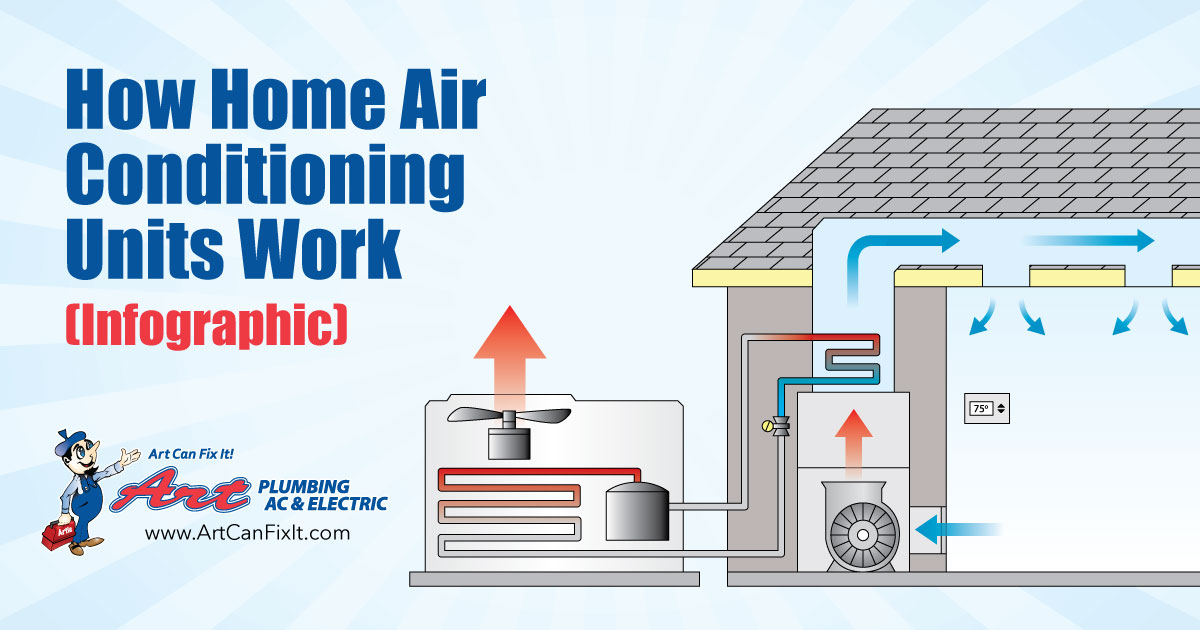
The Components Of Home Air Conditioning Units And How They Work
HVAC is an acronym for Heating, Ventilation, and Air Conditioning. This is both a building system designed to keep the environment comfortable for building occupants and the industry that supports these systems. In order to have a better understanding if these systems, you need to know some of the principles behind HVAC design. The articles referenced here will give you a full and complete.
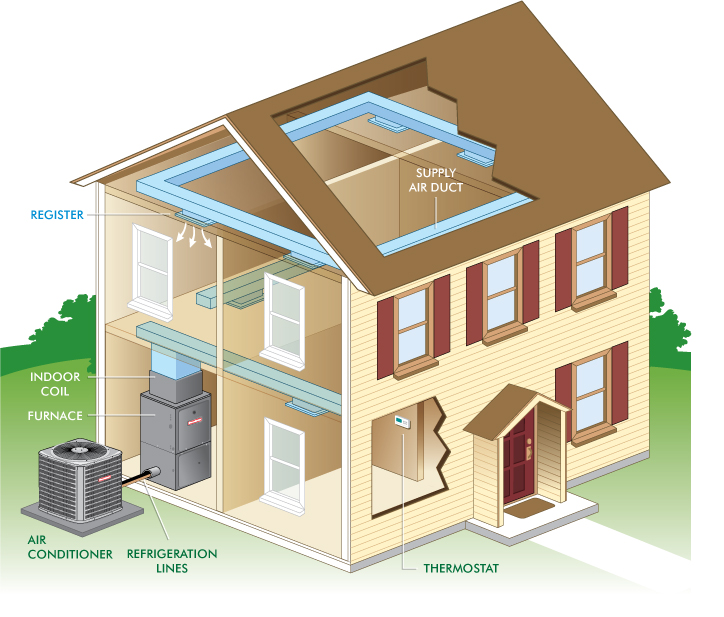
How a Central Air Conditioner Works Ray's Heating & Air
Updated on 07/28/19 Nine OK / Getty Images The workings of a home air-conditioning system are mystifying to many of us. Furnaces are easy to understand—they heat air and blow it around your home through ductwork. Boilers make hot water or steam and move it around your home in pipes.
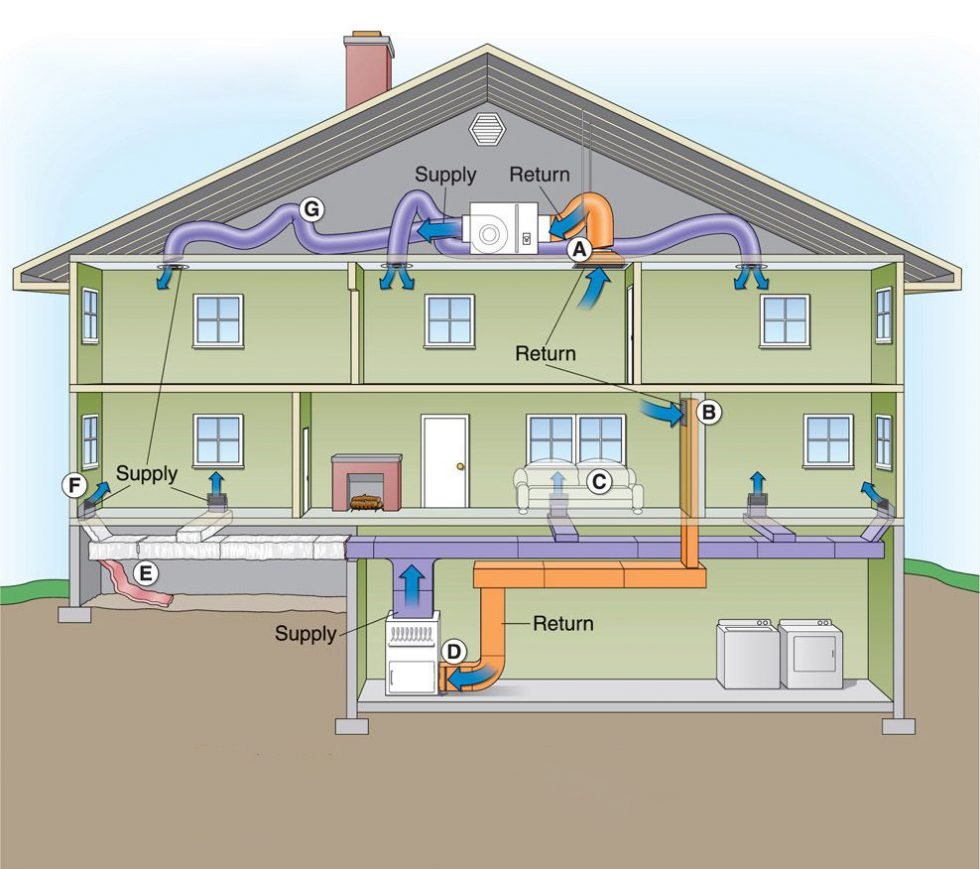
Why Add A Central Air Conditioning System To Your Furnace Purchase?
Aircon, AC, and A/C are common terms for air conditioning. It includes a fan to circulate the conditioned air within the room. The enclosed area can be a building or a vehicle. Today, we'll look at the definition, diagram, purposes, parts, types, and operating principle of an air conditioning system. So let's start.
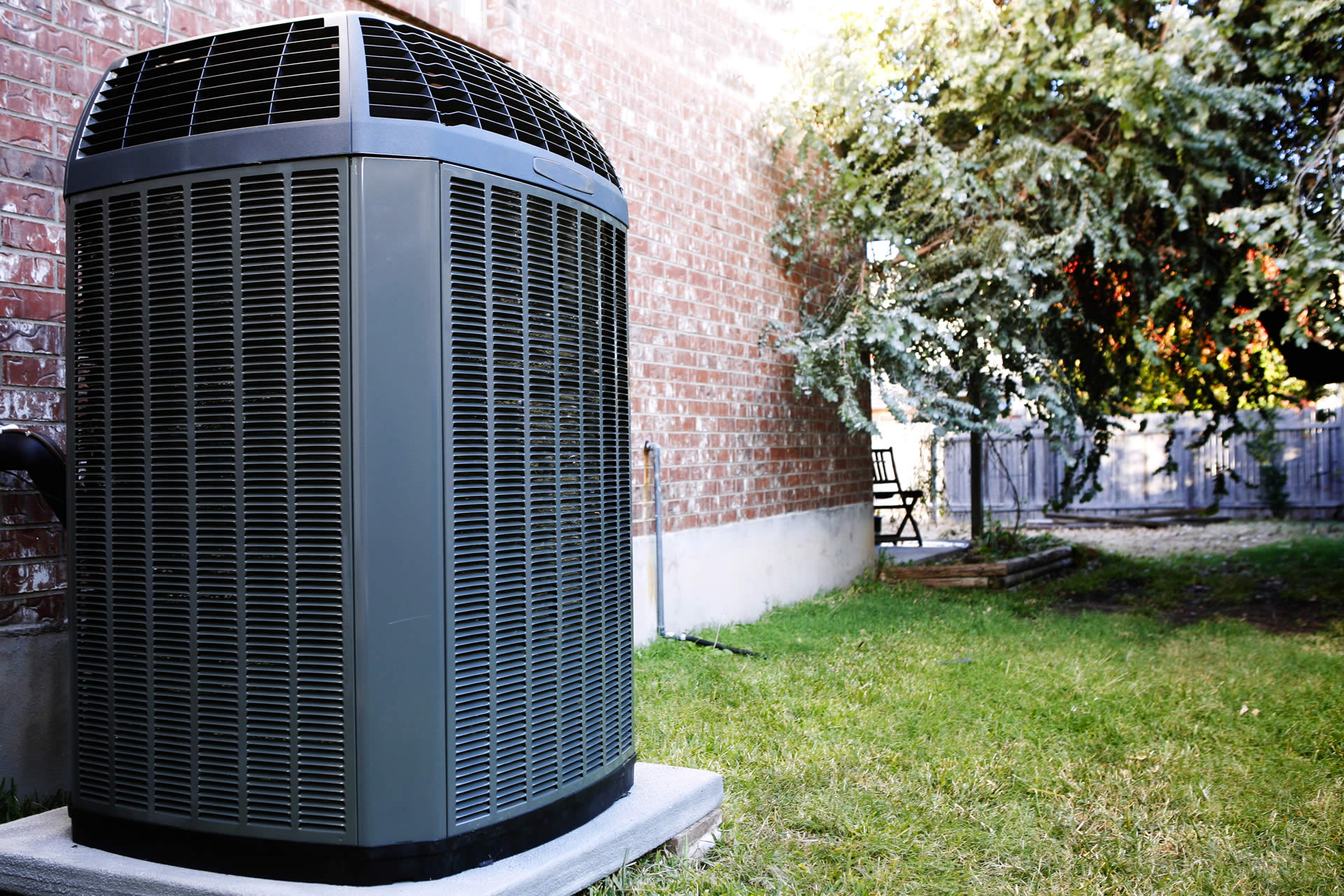
What Are The Best Central Air Conditioning Units To Consider? Hicks
Here's a rough estimate of the cost to upgrade a 3-ton residential system in Des Moines, IA, to one with an Energy Star certification and a SEER 16 efficiency rating: $5,000, including installation. How long does it last? Typical equipment warranties last for 10 years.
/cdn.vox-cdn.com/uploads/chorus_asset/file/19521285/air_handler.jpg)
Diagram Of Residential Hvac System Hvac Manuals Wiring Diagrams Faqs
EVAPORATOR COIL. This is the piece of your air conditioning system that most people never see. It's contained in a metal box called a plenum, and sits on top of your furnace. If you have a horizontal furnace in an attic, the evaporator coil will sit on one end of the furnace instead of on top. The 'inside unit' or 'indoor coil' are.
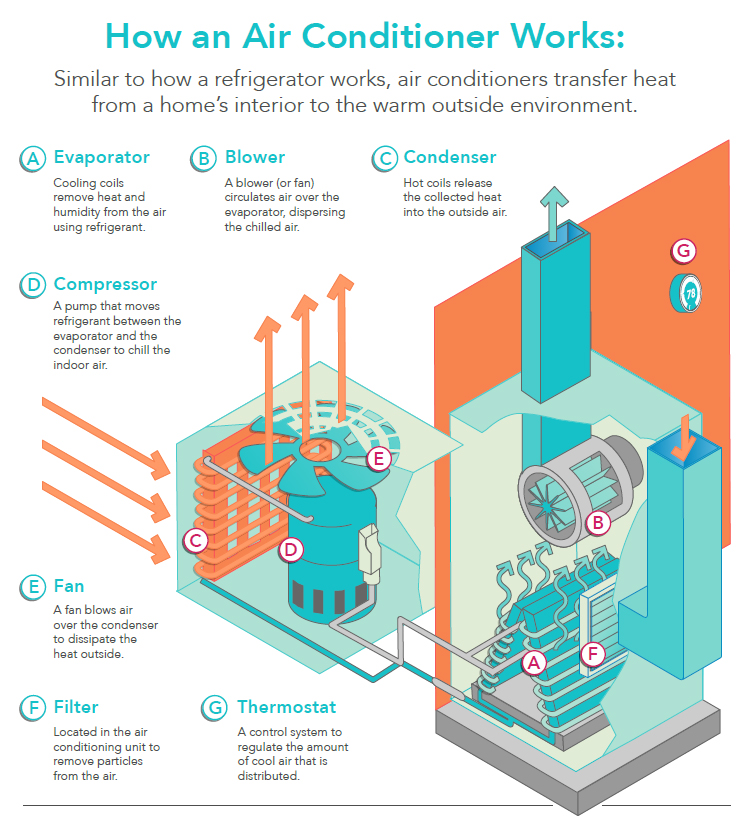
How Do Air Conditioners Work How Does Central Air Work
Central air conditioning systems utilize two main components: an outdoor condenser and an indoor evaporator. The outdoor condenser is housed inside a metal cabinet with slats, called fins, along the sides to direct airflow. Condensers are typically located on a concrete pad beside your home, but may also be located on your roof.

Central Air Conditioning Unit Diagram Schematic Diagram Of Central
A typical central air conditioning system is a two-part or split system that includes: The outdoor unit contains the condenser coil, compressor, electrical components and a fan. The evaporator coil, which is usually installed on top of the gas furnace inside the home.

Infographic How Do Home Air Conditioning Systems Work?
What is Central Air Conditioning? Since the 1960s, central air conditioning systems have been the most common style of cooling in America. Best characterized by the condenser unit outside (pictured) and ducts carrying cool air throughout the home, a central air conditioning is sometimes referred to as a "split-system" because the indoor and.

Residential Air Handling Unit Diagram Hvac For Beginners
Updated: Nov 2, 2023 · Written By: Rob Sabo · Reviewed By: Catie Bonner If you know a little bit about home heating and cooling systems, you probably realize that they are pretty complicated little systems! Inside those compact units are electrical connections, fans, compressors, condensers, switches, coolants — the list goes on and on.

Evaporator And Condenser In Your Air Conditioning System
In most cases, central air conditioning refers to a split-system air conditioner or a heat pump, both have an outdoor and indoor unit. The indoor and outdoor units work together to distribute cool air through a system of ducts in your home. Together, they are composed of five main parts: a thermostat, an outdoor unit (holds a fan, condenser, and condenser coil), an indoor unit (holds a fan and.

Air Conditioning Tips How Does Air Conditioning Work?
Types of Central Air Conditioners A central air conditioner is either a split-system unit or a packaged unit. In a split-system central air conditioner, an outdoor cabinet contains the outdoor heat exchanger, fan, and compressor, and an indoor cabinet contains the indoor heat exchanger and blower.